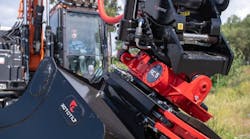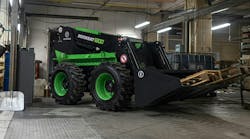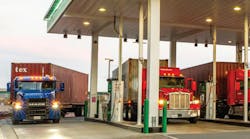In the past 10 years, fleet managers have been dealing with the effects of diesel emission regulations both on-highway and off-highway. Notable issues have been ongoing changes to environmental policies targeted at reducing pollution levels of particulate matter (PM), nitrogen oxides (NOx) and non-methane hydrocarbons (NMHC); the utilization of ultra low sulfur fuels (ULSD) and biodiesel; and developmental changes in engine hardware and emissions strategies.
To further complicate these challenges, this is occurring at a time when rising costs of engines, fuels and maintenance are a key concern for fleet managers.
Although many have argued the true cost to outweigh the benefit to industry from these changes, it is less arguable the environmental benefits that can be derived from the sweeping changes in the emissions regulations. As an example, the strict standards in place for ULSD enabled advanced pollution control technology for cars, trucks and buses so that engine manufacturers could meet the 2007 emissions standards. Moving forward, engine manufacturers have the flexibility to meet the new standards through a phase-in approach between 2007 and 2010. The program also includes various flexible approaches, including additional time for some refiners and special provisions for small refiners.
Once this action is fully implemented:
- 6 million tons of smog-causing nitrogen oxide emissions will be reduced each year. Soot or particulate matter will be reduced by 110,000 tons a year.
- An estimated 8,300 premature deaths, 5,500 cases of chronic bronchitis, and 17,600 cases of acute bronchitis in children will be prevented annually.
- An estimated 360,000 asthma attacks and 386,000 cases of respiratory symptoms in asthmatic children will also be avoided every year. 1.5 million lost work days, 7,100 hospital visits, and 2,400 emergency-room visits for asthma will be prevented.
Fuels development since 1993 has played an important role in the overall strategy to reduce emissions. Maximum benefit in reaching target levels of improvement can be achieved when combined with engine design, the use of emissions hardware, and lubricants. Overall, cleaner fuels have led to many performance opportunities that may not have been as advantageous without this improvement. Now, with most of the industry either converted to ULSD or soon to be moving in that direction, a more clear focus of new fuels development opportunities can be explored.
BiodieselBiodiesel is the next evolutionary change to show promise for improving overall net emissions. Whether derived from vegetable-based or animal-fat sources, the use of biodiesel as a fuel brings benefits in meeting EPA-regulated emissions as well as improved lubricity and solvency, the former characteristic leading to less wear of components where fuel is used as a lubricant and the later in reducing deposits and cleaning fuel systems. Also, because these fuels contain no petroleum products, they can be blended at any level with petroleum fuels to create a biodiesel blend usable in diesel engines.
Conversely, beyond the well-documented issue of reduced energy content and the associated reductions in fuel economy, other concerns have surfaced. These concerns include cold flow and water issues as well as fuel stability and the potential for increased concentration of fuel in the oil sump.
The impact of fuel instability or fuel degradation can be quite significant, either through the creation of corrosive acids or engine deposits. These deposits can impact filters and fuel systems and lead to poor operation of the engine. The natural oxidative stability of biodiesel fuels varies in relation to the bio-material used in the manufacturing process. Biodiesels produced from animal fats do not contain natural antioxidants while vegetable-based sources vary widely in the amount of natural antioxidants they contain. The solvency and cleaning effect of biodiesel is compromised once the fuel begins to degrade, and it will create deposits that will impact the operation of the engine. In older engines, it is possible that the initial use of biodiesel could release accumulated deposits and foul filters and fuel systems. The same effect can occur when filling storage tanks with biodiesel for the first time. It should be noted that exposure to the air during long-term storage of these fuels can also compromise biodiesel stability.
Biodiesel fuels contain components that have a tendency to attract and retain water from atmospheric moisture. Therefore the potential exists for water to be present in the fuel system, bringing with it all the operational problems that arise when fuels contain water, including biological growth and ice formation during cold weather. The presence of water also assists in the development of corrosive elements in the system and increases the likelihood of continued oxidative degradation.
Fuel dilution with biodiesel becomes an issue that goes beyond traditional concerns regarding decreased lubricant viscosity and increased wear. This is especially true for units operating with DPF technology in which post injection is used. When using post-injection technology, excess fuel will coat the walls of the cylinder liner during the DPF regeneration process and end up concentrating in the oil sump. Due to biodiesel's lower volatility, larger amounts of unburned fuel remain in the cylinder with each combustion cycle than are seen with petroleum fuels.
When post fuel injection is not in use, fuel dilution continues to occur at levels higher than seen with petroleum fuels, and these levels increase with the fuel blend percentages. Fuel concentration in the oil sump can increase to the point where a B5 fuel, in effect, can be in the sump in concentrations that would make it appear that a B20 fuel or higher is in use. This occurs again, because biodiesel has lower volatility than other petroleum products (fuel and oil) they associate with in the engine. Under these conditions not only does lubricant viscosity decrease, bringing all the wear-related issues associated with this condition, but significant interactions occur between the engine lubricant and the fuel. This increases the degradation of the engine oil beyond what is seen when petroleum fuels dilute lubricants.
Additionally, there remain concerns that high fuel dilution levels reduce the TBN of the oil. With decreasing TBN values and increasing levels of oxidation and acid formation appearing in oil-analysis reports, maintenance mangers often find themselves reducing drain intervals from previous levels.
Under winter conditions, there is a difference between the behavior of biodiesel and petroleum fuels. Biodiesel will begin waxing and at higher temperatures instigating fuel system problems before conventional fuels. The cold temperature flow of biodiesel is also impacted by the fuel blend, and above B10, fuel flow becomes an issue. Traditional winter fuel additives may not be effective when mixed with biodiesel fuels, and some biodiesel additives have proven harmful when added to fuels in which the diesel portion was already treated with traditional cold flow additives. Aside from added costs, the harmful effects of over treating could impact deposit formation in engines, leading to increased wear and oil consumption.
As fleet managers have worked to familiarize themselves with the changing world of fuels, lubricants and hardware, they will also have to make changes in the way they perform maintenance. Standard maintenance schedules will likely have to include a more comprehensive schedule to include the following: Air intake systems, fuel injectors, turbochargers, EGR systems, PCV valves, particulate traps, and electronic engine control units and its associated sensors. Any other add-on, emissions-related component whose primary purpose is to reduce emissions or whose failure will significantly degrade emissions control is also subject to added attention.
This maintenance will include more frequent adjustment, cleaning, repair and/or replacement of these components to ensure they are operating at peak performance. Otherwise, any reduction in performance could lead directly to disabling overall system efficiency. On another note, this will mean added training and the use of new technologies in order for maintenance to be completed properly. Technicians will be responsible for the proper methods and utilization of tools necessary to complete the task.
At the end of the day, managing emissions-related maintenance will be both challenging and opportunistic for fleet managers. There is much to learn and much more to experience in order to develop time-tested best practices that will ensure keeping the fleet maintained at world-class levels. For many managers, they are up to the task and look forward to playing their part in a more emissions-friendly industry.
| Author Information |
| Brian Jacoby is director field engineering & technical support for BP Lubricants USA Inc. |








